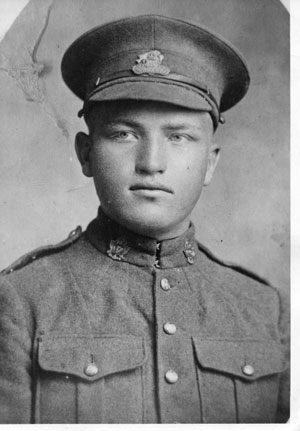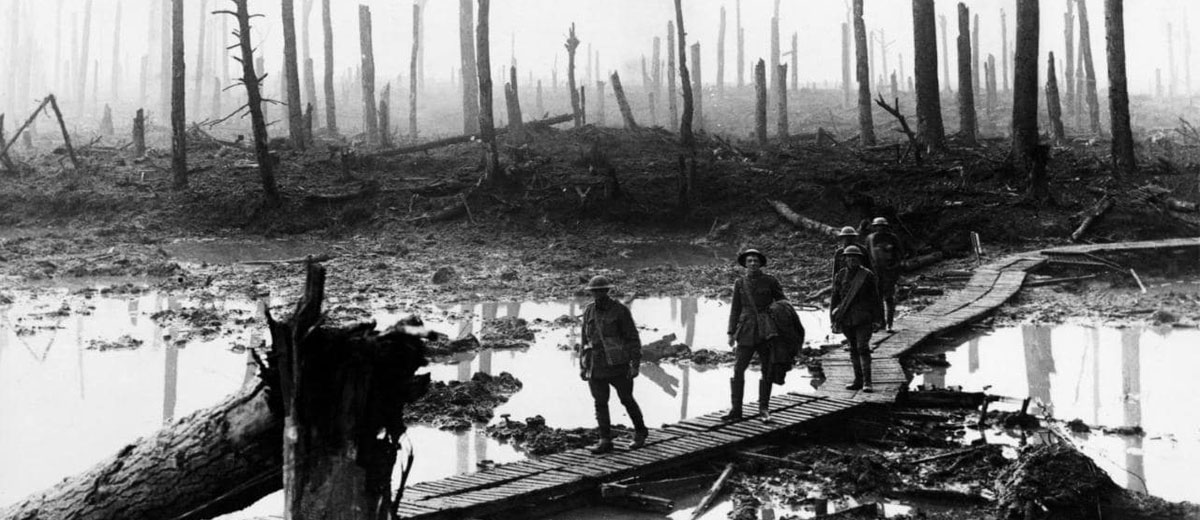For the last three years, Canadians have been passing important anniversaries of events related to the First World War.
This October is one of these important anniversaries: it marks 100 years since Canadians became involved in the famous Battle of Passchendaele. Also known as the Third Battle of Ypres, this assault remains a classic example of attrition warfare and exemplifies the futility and senseless killing of the First World War.
The Battle of Passchendaele was part of a British offensive, attributed to General Douglas Haig. With the Germans engaged in unrestricted submarine warfare and the French army dealing with reluctant troops, Haig felt the need for a British offensive along the contested Ypres salient. Despite skepticism from British Prime Minister David Lloyd George, the scheme was put into action in late July 1917.
A preliminary bombardment was launched by the British on July 18, utilizing 3,000 guns and 4.25 million shells. The following 13 days of bombardment not only deafened the ears of soldiers and destroyed drainage systems, but it also erased any possibility of a surprise attack. Zero hour was 03:50 on July 31, 1917. British soldiers were ordered over the top, and into one of the worst nightmares imaginable. Three years of previous fighting had left the area completely barren of trees or vegetation, and the troops had to cross ground that was pockmarked with shell-holes and littered with the shells from their preliminary bombardment.
To make matters worse, heavy rains—the heaviest in 30 years—poured down on the plains and turned them into a quagmire. Tanks became immobilized in the mud. Stretcher bearers struggled to make it to the wounded. Casualties, taking refuge in water-filled shell craters, were swallowed by the mire.

By October, Haig was calling upon Canadians for help. Arthur Curie, commander of the Canadian Expeditionary Force (CEF), protested that it would only cost the CEF unnecessary casualties, but he had little choice in the matter. He began preparing for a Canadian assault, which would open on October 26.
Private Roy Clarence Armstrong was among the Canadian troops stationed in Passchendaele. The 19-year-old prairie boy was serving in the 78th Battalion and had enlisted over a year earlier, in March of 1916. His letters seem to indicate that he hoped to return to help run the family farm after the war. His attestation papers list Winnipeg as his place of enlistment, but his mother’s address was in Saltcoats, SK. On October 24, he wrote a letter home to his family*:
Just droping [sic] you a few lines to let you know that I am still well & kicking. I have sent wizz-bangs [shells] lately because we were out resting & billeted in barns some distance from Y.M.C.A.s & it was difficult to get paper… it is beastly sloppy now & it looks as though it doesn’t intend to stop raining until next spring. Those top boots you mentioned will sure come in handy this winter & please stick a few eats & smokes as I’m beastly hungry.
Roy wrote two letters home on October 26—one to his mother, and another to his brother. They were his last. Roy was killed in action on October 30, 1917.
The town of Passchendaele fell to the Allies on November 6, 1917. Haig brought the offensive to a halt four days later. The Battle of Passchendaele had raged for three months, one week and three days. At the end of it, the point seemed very arcane. The British forces suffered roughly 270,000 killed or wounded, including 15,600 Canadians, and the Germans suffered roughly 220,000 casualties. All of the territory gained by the Allies was abandoned the following year.
There is one important lesson that can be drawn from the horror and mire of Passchendaele. Canadians have always been willing to fight bravely, and die bravely, for causes that they believe in. Nine Canadians were awarded the Victoria Cross for their actions during Passchendaele. Roy Armstrong never saw his family or his farm again. He dreamed of peace, and he was willing to sacrifice his 19-year-old life for that dream. Let’s not take for granted the very things that were bought with the lives and futures of our servicemen.
*This excerpt from Private Armstrong’s letter was accessed via the Canadian Letters and Images Project at www.canadianletters.ca. The letter is the property of his living relatives and family.
For the latest information and for more updates on everything Kindersley, ‘Like’ the Kindersley Social Facebook page below…
